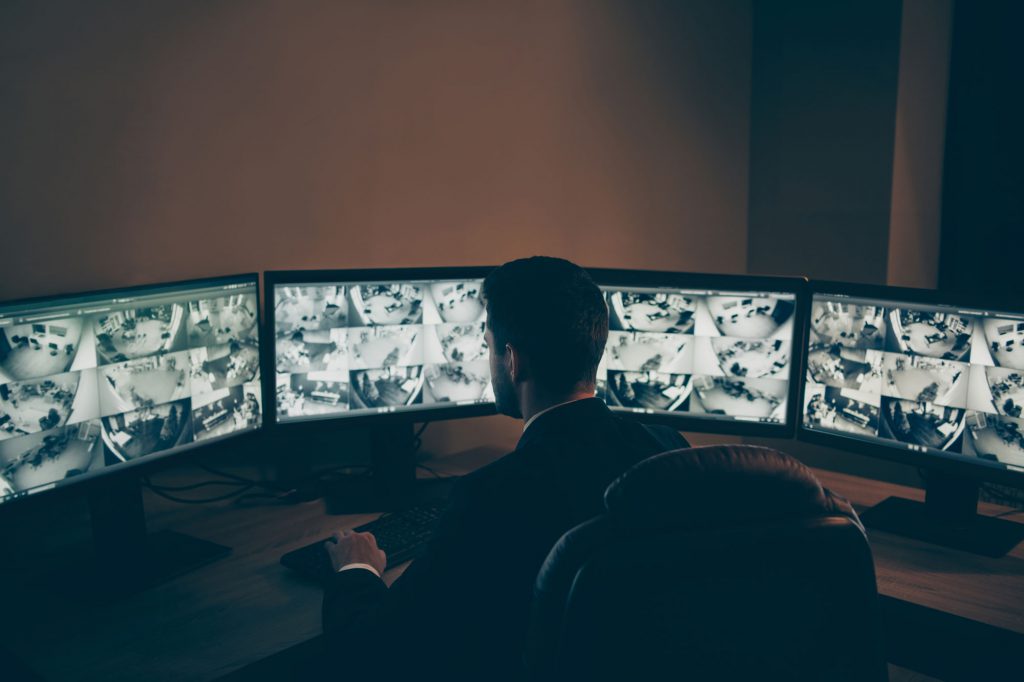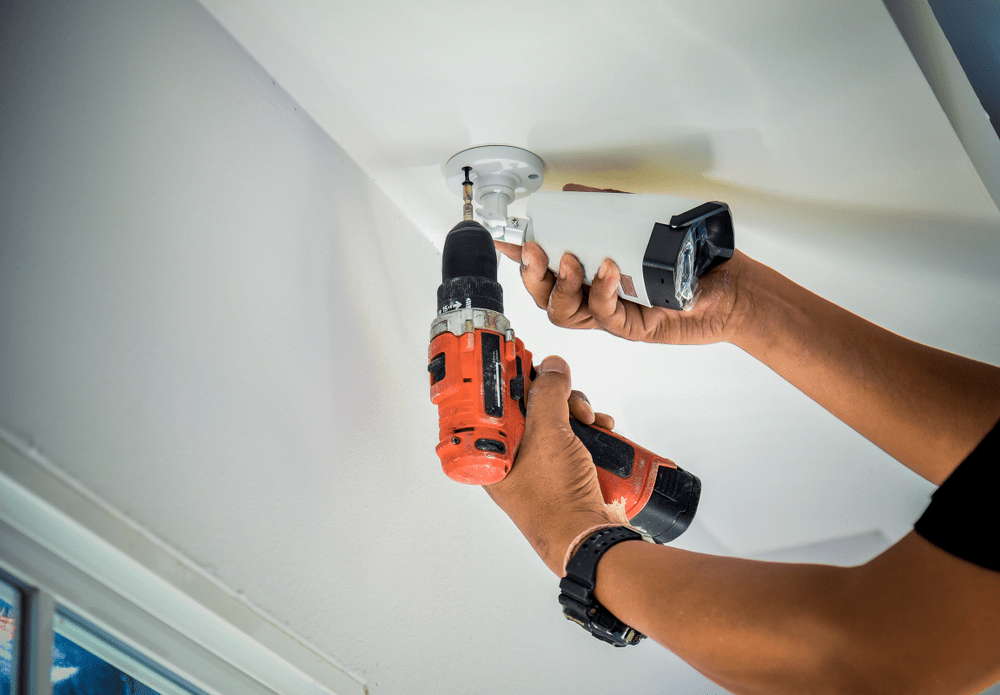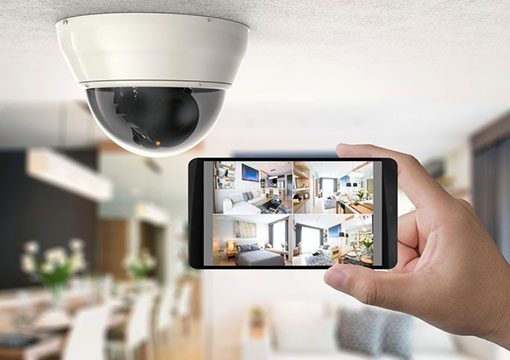Are you in the market for or considering closed circuit television in NYC? Also known as CCTV, closed circuit television can be an invaluable asset for any business or even home. So what exactly is CCTV, and how can you benefit from installing it? In this article, we will go over all the basics and other important information to know about closed circuit television in New York City.
 NYC Closed Circuit Television:
NYC Closed Circuit Television:
In recent years, CCTV technology has made some major improvements. The quality of the video images, storage, and viewing the images on a monitor has increased considerably. Digital technology has been responsible for this improvement in today’s CCTV. While technology seems to be constantly changing, the idea about how the systems operate remains relatively the same: utilization of a video camera to transmit a signal to a monitor. There are three major components of a CCTV system: camera, cable, and monitor.
The specific purpose of the CCTV in Brooklyn should determine the type of equipment that should be installed. With the ever changing advancement in technology, the system will eventually become obsolete. When an obsolete system still satisfies the purpose of the system, the equipment installed was the correct equipment.
Purposes of CCTV in Manhattan:
- Alarm verification: An activation of an alarm can be verified often times by viewing the area on CCTV. An example would be an activation of an alarm on an exterior fence. If the fence is viewed on CCTV, what activated the alarm can be determined (example: an animal or an intruder).
- Expanding the surveillance capabilities of Security Officers: This allows one officer to monitor many places at the same time. Also, defined video tours can be accomplished with the use of many fixed cameras and/or several pan-tilt-and-zoom (PTZ) cameras. Pan-Tilt-Zoom cameras have the mechanical equipment to move the camera to face multiple directions and focus on an object. Although they can be set to automatically pan (move side to side) and tilt (move up and down), focusing the lens on a particular location or object usually requires personnel operating the system.
- Deterrence: The existence of a camera can be a deterrent to criminal activity. For CCTV in the Bronx to be a deterrent, it has to have the psychological effect of discouraging a person from committing a criminal act.
- Auditing of cash and credit card transactions: The monitoring of financial transactions can be important in the investigation of theft or other incidents. Examples could be monitoring the cash register at a gift shop, bar or restaurant. Since employee theft can be a concern of any business, CCTV in Staten Island can be installed and positioned to monitor the transactions involving employees or the actions of employees while completing a transaction for a customer. Additionally, pictures of thieves using stolen credit cards can lead to their identification and prosecution.
- Monitoring of employee performance: Overseeing how an employee performs their duties can help determine if an employee is following applicable policies and procedures.
- Remote location service: An individual can be granted access through a door by someone located away from the area. Additionally, communication equipment can be set up so as to speak to someone while they are observed on the monitor of the CCTV in Queens.
 CCTV in Manhattan provides surveillance that can allow the operator to detect criminal activities and record the camera footage. New York City CCTV surveillance loses its effectiveness without a meaningful response to a situation. Without a meaningful response, CCTV video becomes an aid in the investigation of a criminal act, not an effective deterrent. Established policies and procedures have to be in place, so the appropriate personnel respond to a situation. Without the physical response of appropriate personnel, the security measure (CCTV) becomes less and less effective over time. People learn that an area that is properly monitored will have more patrons, and criminals are more likely to be found in the insufficiently monitored or unmonitored area.
CCTV in Manhattan provides surveillance that can allow the operator to detect criminal activities and record the camera footage. New York City CCTV surveillance loses its effectiveness without a meaningful response to a situation. Without a meaningful response, CCTV video becomes an aid in the investigation of a criminal act, not an effective deterrent. Established policies and procedures have to be in place, so the appropriate personnel respond to a situation. Without the physical response of appropriate personnel, the security measure (CCTV) becomes less and less effective over time. People learn that an area that is properly monitored will have more patrons, and criminals are more likely to be found in the insufficiently monitored or unmonitored area.
The purpose of the application often times determines how the cameras of a Brooklyn CCTV system will be installed, mounted, and housed. There are three basic options available for installing/housing the cameras of a CCTV system:
- Traditional: This installation is the one that was most common in the past. The cameras required a mounting bracket and should be in some kind of protective cover if installed outside.
- Dome: This installation has gained popularity because of its resistance to vandalism and its protection from varying weather conditions when mounted outside. Additionally, the domes are often tinted and make it difficult for someone unfamiliar with the system to know which direction the cameras are facing.
- Covert: This installation has the cameras in housings that look like other devices, so the cameras are disguised. Examples are signs, clocks, and smoke and alarm detectors. Also, some of these devices actually function like what they look like. An example would be a camera within a functioning clock.
In order for a Manhattan CCTV system to satisfactorily obtain video footage of something about to happen, something that is happening, or something that has happened; the right camera system has to be chosen. Camera systems are made up of the camera, lens, and housing. Camera housings were discussed in the preceding section. The camera should be selected before the lens. In selecting a camera, the following considerations should be made:
- The sensitivity to light required to produce the desired image.
- Resolution, which is the detailed image quality, should be considered next. The higher the resolution, the clearer the image.
- The features of a camera should be considered last.
When Selecting a Camera for a CCTV System in NYC, Remember:
- Some cameras may have an audio option. Consider the legal implications of the use of this option.
- When manufacturers describe their cameras as having regular or high resolution, be aware that these terms can mean different things to different manufacturers.
- Problems may occur because of camera manufacturers producing cameras that operate slightly different from each other. Thus, cameras from the same manufacturer are recommended for the same system.
- Cameras can be vandalized. Mounting a camera high above ground can minimize incidents of vandalism, but may have an effect on the quality of the video image. Also, maintenance and repair work may become more difficult if a camera is located in a difficult location to reach.
 Lenses determine what type of image will appear on the monitor. It is important to know why a location is going to be under surveillance by CCTV. Is it to be able to accurately identify an individual? Is it to be able to accurately identify a location or the actions taking place at a location? Different lenses allow for different images to be viewed. It is important to remember to choose a lens that is compatible to the camera. Some types of lenses are:
Lenses determine what type of image will appear on the monitor. It is important to know why a location is going to be under surveillance by CCTV. Is it to be able to accurately identify an individual? Is it to be able to accurately identify a location or the actions taking place at a location? Different lenses allow for different images to be viewed. It is important to remember to choose a lens that is compatible to the camera. Some types of lenses are:
- Fixed lenses: Generally, the smaller the lens, the larger (taller and wider) the image from the same distance.
- Manual and auto-iris lenses: The iris allows adjustments or makes the adjustments automatically for light so the image is not too dark or too light.
- Zoom lenses: Lenses that zoom in and out automatically or manually. Automatic zoom lenses allow the operator to adjust the view from a remote location. Manual zoom lenses require the operator, or installer, to manually adjust the view.
- Vari-focal lenses: Lenses that can be adjusted to obtain the desired image.
- Wide-angle lenses: Lenses that allow viewing of a wide scene.
Monitors are devices that display the camera images. A monitor is needed so the camera images can be seen. Traditional monitors were televisions without the tuners and came in various sizes. As a result of digital technology, camera systems can be controlled by a PC (personal computer) and the images can be displayed on the PC.
Recorders could be considered a fourth component of a Queens CCTV system. They aren’t because a CCTV system can still function without a recorder; but the video images will not be recorded for future review and analysis. Recorders store the video images, so they can be reviewed at a later time. This helps determine the details of what occurred during an incident or if the incident even happened. The storage of video images can assist law enforcement in the investigation of incidents. Time-lapse recorders were the standard a few years ago. They looked like a VCR and utilized tapes to record the video images. The images were compressed on the tape, so as to extend the hours of recording on one tape. The problems associated with time-lapse recorders were the tapes degraded quickly, so the image quality was affected. Also, the compression of images on the tape often resulted in some images not being recorded. This resulted in a choppy appearance of the video. Event recorders are similar to time-lapse recorders, except they record when triggered by an event. An example is a motion detector being activated.
Digital recorders, known as DVRs (Digital Video Recorder), capture the video images on a hard drive, CD, or DVD. There are distinct advantages over time-lapse recorders: The image quality is superior to tapes and it’s easier to review images because of not having to rewind a tape. The costs of digital recorders have come down and they have become the industry standard for recording.
There are many accessories and features for Staten Island CCTV systems. Use of CCTV will increase in the future. New technology and equipment will be developed to meet these growing demands.